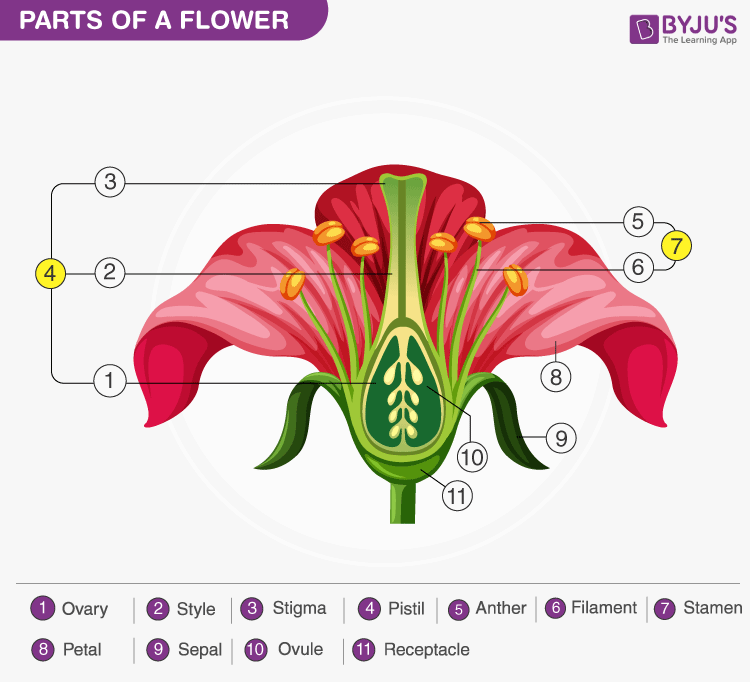The pistil of the flower is the female reproductive structure of the flower. It is divided into different structures such as stigma, style, ovary and ovule. The design of the pistil is to support the pollination process, which ultimately leads to fertilization.
Also refer: Parts of a Flower.
Structure of Pistil
The pistil of a flower is well-protected as it is located in the centre of a flower. The pistil consists of a swollen base known as the ovary, which contains the ovule. The swollen base elongates upwards into a tube-like structure known as style. The tip of style is known as the stigma, which acts as a platform for receiving pollen grains. The shape of the pistil varies between different species, but the general structure remains the same.

Also Read: Sexual Reproduction in Flowering Plants
Functions of Pistil
The main function of the pistil is reproduction. Let’s discuss how important it is pistil to the flower:
1) It is the female reproductive part of the flower, and therefore it is involved in the fertilization process.
2) The stigma of the pistil is responsible for receiving the pollen.
3) The style of the pistil is responsible for safely transporting the compatible pollen to the ovule.
4) Pistil protects the ovule present inside it.
Read more: Pollination
This article concludes with the introduction to the pistil. To know more about pistils, their structure, functions, different parts of flowers, other related topics and important questions on flowers, and types of flowers, keep visiting our website at BYJU’S Biology.

Comments